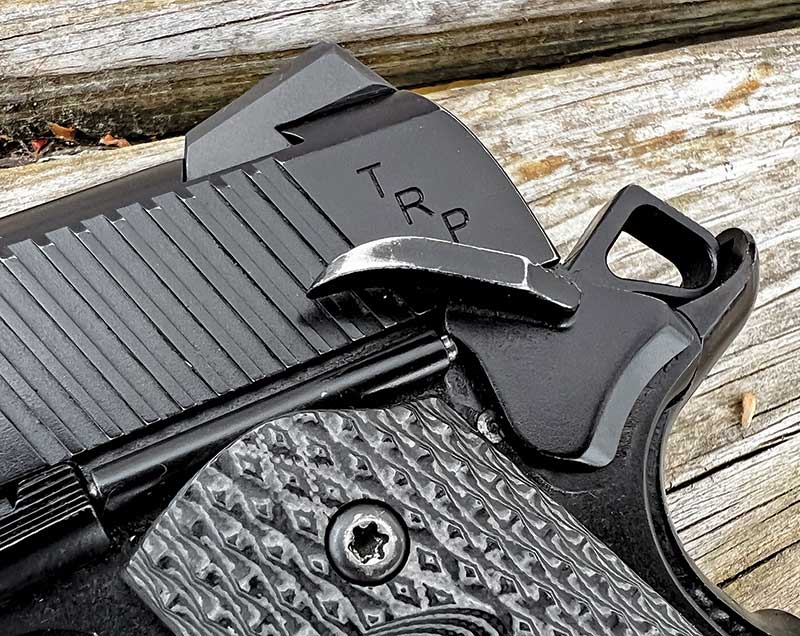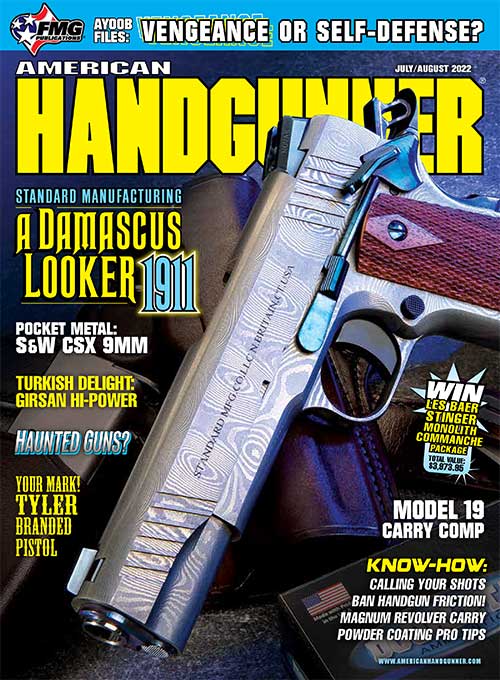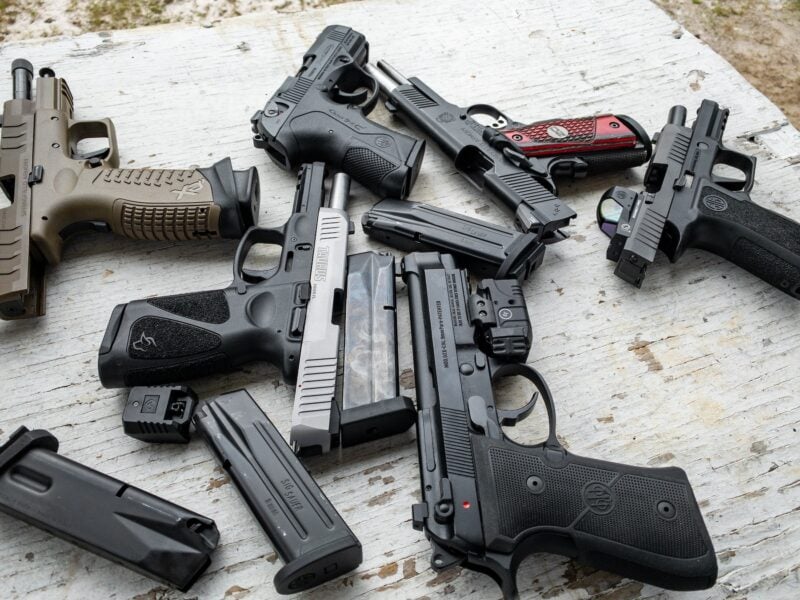Battle Scars: Your Defensive
Pistol Needs Some
Wear and Tear
Do me a favor? Stop reading this and go find your favorite hammer. I can wait.
Got it? Good.
Now check the finish. Does it have any scuffs, mars, or dings? Does the rubber grip have any wear? How about the original paint on the head? That’s all factory new, right?
Nah, just kidding. If you’re anything like me, your favorite nail pounder shows some hard-earned mileage. My go-to hammer is an Estwing I bought some 25 or 30 years ago, best I can remember. As you can see, it’s been around the block, and I’m not even a professional builder using it to pound hundreds or thousands of nails per day. I’m arguably far short of a professional carpenter, managing to bash my fingers only several times per building session.
However, my hammer has driven enough nails to build a couple of docks, several wood decks, and even a few Bluebird houses. Come to think of it, it’s done its share of demolition too, and that’s always a crowd-pleaser. Old docks and decks had to be smashed and broken to make room for the new. A quality tool is tough enough to handle such work, as it should be.
The scars on my hammer present no accusation of intentional abuse, just lots of use. It’s discolored here and there showing a tiny remnant of the original label and typical dings and dents from an impact-filled life. Once useful for preventing slippage on nails, the checkering on the hammer face is mostly flattened from steel-on-steel collisions. The grip is worn smooth and offers little of the original shock resistance. These scuffs, marks and dings are battle scars, simply a byproduct of using it for the job it was designed for. If a hammer could have a purpose in life, this one would earn “well done, good and faithful servant” praise one day, even considering its not-very-skilled owner-operator.
Helicopter Gun Owners
I have friends, more than one, who treat their guns much like modern parents raise children, making valiant, though misguided, efforts to protect them from the hazards of their environment.
“No, honey, you can’t have a skateboard. They’re dangerous. Imagine what could happen if you fell off!”
“No, I can’t go to the range today. It’s raining, and I don’t want my guns to get wet. Besides, the magazines might get muddy.”
You know the routine. At the range, they meticulously open the original factory shipping box, carefully removing the pistol or revolver from the original non-corrosion sleeve. Thankfully, most don’t wear white gloves during the ritual. The magazine is stored in its foam cutout, or maybe under that impossible to re-shape cardboard storage area in less-expensive corrugated packaging. A clean towel is laid out on the range bench to protect against dust and scratches.
Once removed and displayed, the gun is cover-girl-ready. Even Rob Jones, our professional photographer extraordinaire, would be tempted to spare his alcohol wipes before setting up the cameras for a cover shoot. And they’ll stay that way because the slide or barrel will never abrade on the inside of a holster, and the magazines will never touch the ground. Heck, an unscrupulous owner could sell these guns as unfired for years after the original purchase.
Safe Queens, Safe Dreams
Being somewhat libertarian, I don’t have any issues with safe queens. In fact, I have a couple myself. One is a Series 1 Colt Woodsman, bought by my grandfather in 1936. He rarely, if ever, shot it, so to this day, it remains in pristine condition. He did toss the original packaging, choosing to store this gem in a lightly oiled rag, but in all other respects, it looks fresh out of the box some 86 years after its birth date. I don’t bring this on rainy days, nor do I use it with a holster or drop magazines on the ground. It’s the firearm equivalent of that classic restored car one only drives on sunny spring days. Then again, I don’t plan to use it for defensive purposes. And therein lies the rub. The Woodsman is not a tool; it’s an heirloom.
If one intends to buy a gun for defensive use, it darn well better develop some battle scars. I’m not talking about dents and gouges; I’m talking about “mileage” scars.
If your carry or home defense firearm doesn’t have any finish wear marks on high-traffic areas like safety levers, decockers and the like, it hasn’t been … used. If your carry gun doesn’t have some scuff or wear on the slide or sights from thousands of holster draws, it hasn’t been … used. These guns are safe dreams. One dreams of a satisfying cowboy movie ending should they ever be called for defensive duty.
Okay, there are some wear and tear exceptions. That Tenifer stuff on GLOCK slides seems as indestructible as Maxine Waters, and I know there are a couple of other equally wear-resistant finishes. But you get the idea.
Scars Have Stories
My worn hammer brings back memories every time I use it. Sore arms from 10 trillion nails the day before, but also happy times swinging in a half-submerged hammock under that new dock.
Guns with scars carry their own stories, hopefully, happy ones. Good times at the range. That time when an instructor humbled an overly cocky student (yours truly) by getting him so confuzzled, he was dropping full magazines in the mud. You know, good times.
Scars mark significant stops on the subway of life. It’s okay for your “tool” guns to have some.









